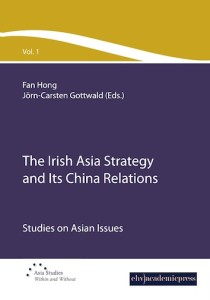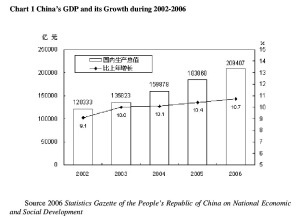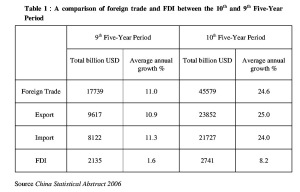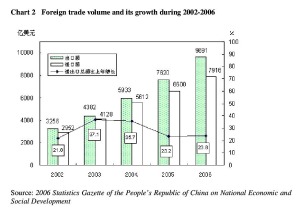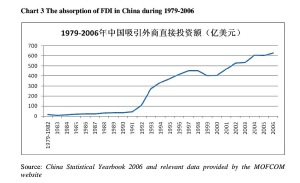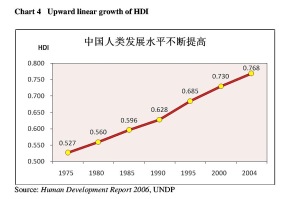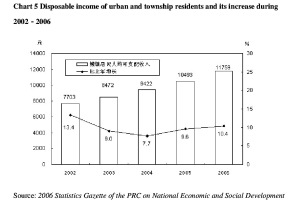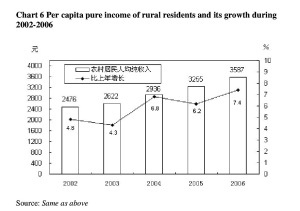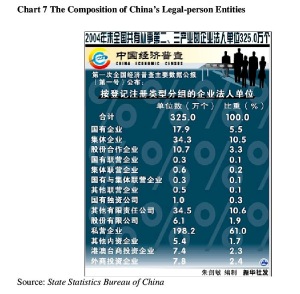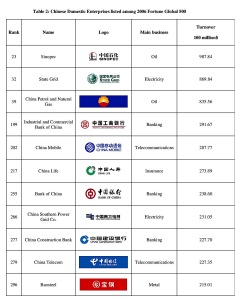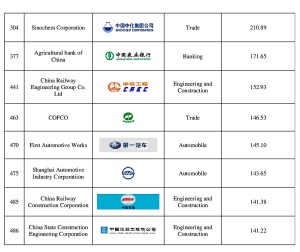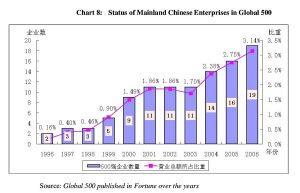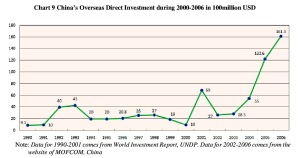 1. Introduction
1. Introduction
Roman rhetoricians knew about a certain rhetorical device called contrarium, which they, however, variably considered either a figure of speech or a certain type of argument, at times even both. This paper will try to analyze the function of this term that vacillates between the realms of stylistic embellishment and argumentation and to elucidate both its logical background and linguistic appearance. In a first section, the development of the concept of contrarium from the Rhetoric to Herennius to Cicero and Quintilian will be sketched. Next, Cicero’s account of the enthymeme in his Topics and its relationship to contrarium will be analyzed and, based on the examples offered by those authors, an analysis of the typical pattern of this type of argument will be given. A study of a selection of examples from Cicero’s writings will reveal their underlying argumentative basis, before finally the persuasive force of the standard phrasing as rhetorical questions will be discussed.
2. Contrarium in Roman Rhetoric
2.1. Contrarium in the Rhetoric to Herennius
In the fourth book of the anonymous Rhetoric to Herennius, which is arguably the oldest extant rhetorical handbook in Latin, most commonly dated to the mid-80s of the first century B.C.E., a feature called contrarium appears within a lengthy list of figures of diction (Rhet. ad Her. 4.25-26). It is defined as a figure “which, of two opposite statements, uses one so as neatly and directly to prove the other.” Unfortunately, the anonymous author does not go into any greater analytic detail. Instead, he prefers to offer a whole series of examples, as follows (trans. Caplan 1954, p. 293, modified):
(1) Now how should you expect one who has ever been hostile to his own interests to be friendly to another’s?
(2) Now why should you think that one who is, as you have learned, a faithless friend, can be an honourable enemy?
(3) How should you expect a person whose arrogance has been insufferable in private life, to be agreeable and self-knowing when in power, and
(4) one who in conversation among friends has never spoken the truth, to refrain from lies before public assemblies?
(5) Do we fear to fight them on the plains when we have hurled them down from the hills?
(6) When they outnumbered us, they were not equal to us; now that we outnumber them, do we fear that they will be superior to us?
It is obvious that in each of these examples one or more pairs of opposites are involved:
(1) own interests versus another’s; hostile versus friendly;
(2) friend versus enemy;
(3) arrogance versus agreeability; private life versus position in power;
(4) truth versus lies; conversation among friends versus public assemblies;
(5) plains versus hills;
(6) them outnumbering us versus us outnumbering them; not even equal versus superior.
As the entire fourth book of the Rhetoric to Herennius is dedicated to elocutio and the theory of rhetorical figures, it would at first sight appear natural that what is being illustrated by these examples must correspond to some particular figure of diction. And, judging from the list of oppositions just quoted, it would further seem obvious that the figure in question can be no other but Antithesis. This clearly is Cicero’s definition of contrarium in his juvenile work De inventione, roughly contemporaneous with the Rhetoric to Herennius. Contrarium, Cicero states (De inv. 1.42), is what is most distant from that to which it is said to be the contrary, such as cold to heat or death to life.
Yet in the Rhetoric to Herennius Antithesis has already been treated a few paragraphs prior to our passage, in 4.21, under the name of contentio, defined as language built upon contraries (ex contrariis). Later in the book (4.58-59), contrarium is in fact closely associated with contentio/antithesis as a purely stylistic device and part of ornatus. At 4.26, however, the author immediately points out that the feature in question “is not only agreeable to the ear on account of its brief and complete rounding-off, but by means of the contrary statement also forcibly proves (vehementer … conprobat) what the speaker needs to prove; and from a statement which is unquestionable it infers what is questionable, in such a way that the inference cannot be refuted, or can be refuted only with the greatest difficulty.” So what is in fact being demonstrated here is after all not simply the figure of Antithesis, not a mere embellishment of style, but a particular type of argument. Such a shift in meaning need not necessarily be surprising, as that author is guilty of frequent equivocations in nomenclature. But as the author leaves us abruptly at this point to pass on to the next figure of his catalogue, we are left on our own for making sense of this puzzling perception.
Besides the undeniable employment of pairs of opposites, there is, however, an even more striking stylistic feature that is common to all the examples, but which our author, strangely enough, does not address at all. All examples without exception are phrased as rhetorical questions. Yet a rhetorical question may indeed rightly be addressed as a figure of diction. Might it perhaps be this stylistic feature that makes contrarium justly appear within a list of figures of diction?
Such a guess is clearly supported by the closer context in which contrarium appears in the fourth book. It is presented as the last item within a more or less close-knit subset of related features described in paragraphs 21-26. Some of those also involve interrogative elements, viz. Interrogatio (4.22) and Ratiocinatio (4.23-24), the latter of which, judging by the examples presented, appears to be a kind of reasoning by question and answer. In 4.22, immediately following Antithesis, Exclamation (exclamatio) is treated in close connection with Interrogation; the last of the examples given for Exclamation in fact even is a question. This will become important. In 4.24-25 then, immediately preceding contrarium, there is a treatment of Maxim, both without and with an accompanying rationale (ratio). Yet a maxim accompanied by a rationale is one of the classical manifestations and definitions of the enthymeme (cf. Arist., Rhet. 2.21, 1394a31-b6; Quint., Inst. Or. 8.5.11). Thus this whole sequence of six manners of stylistic expression centres round the ideas of questions, antitheses, and reasoning.
If we further take into account that later on Quintilian, in his account of the enthymeme (Inst. Or. 5.10.2), remarks that a certain Cornificius used to call the enthymeme by the name of contrarium, we may fairly confidently assume that the Rhetoric ad Herennium is also referring to some such kind of argument. In fact, based on Quintilian’s remark, some scholars have sought to identify the author of the Ad Herennium with the said Cornificius.
But the argument in question is not identical with the enthymeme “from contraries” either, which is mentioned by Aristotle within his list of topical enthymemes in book 2, chapter 23 of his Rhetoric (1397a7-19), and which in Latin is known as the argumentum e contrario (e.g. “if war is a bad thing, peace must be a good thing.”). For in that case example (1) would have to run: “Who has been hostile to his own interests, will be friendly to another’s”. For in an argumentum e contrario, two pairs of contraries are shown to be mutually concomitant. Here, however, the conclusion drawn is exactly the opposite: The person in question will be even less friendly (i.e.: even more hostile) to another’s interests. For the meaning of a rhetorical question is tantamount to the denial of the questioned proposition. So what is involved is rather a different topos, i.e. the topos a maiore ad minus or vice versa (cf. Aristotle, Rhet. 2.23, 1397b12-29). Quite similarly so for the rest of the examples. What needs to be noted after all is that the anonymous author, although he appreciates the argumentative value of contrarium, primarily assigns to it a position among figures of speech. He chiefly regards it as a means of stylistic embellishment that ought to be completed briefly and tightly within one period.
2.2. Contrarium in Cicero, De Oratore
In his De oratore from his mature period (55 B.C.E.) Cicero also mentions contrarium in a catalogue of rhetorical figures (De or. 3.207). The heading again clearly is embellishment of diction. In this catalogue, contrarium features in the same group with items such as gradation of clauses, epiphora, inversion of words, asyndeton, paraleipsis, correction, exclamation etc. Quintilian quotes this passage at length (Inst. Or. 9.1.34), but is not always sure of the precise meaning of each individual term. As Cicero unfortunately does not provide any examples, it is impossible to ascertain exactly what he means by contrarium here, but the context seems to indicate that he refers to a stylistic figure.
Almost the same catalogue recurs in the Orator from Cicero’s later years (46 B.C.E.) in a passage (Or. 135) that is again quoted verbatim by Quintilian (Inst. Or. 9.1.39). But whereas most of the other features such as gradation, asyndeton, correction, or exclamation reappear, contrarium is now omitted. Quintilian (Inst. Or. 9.3.90) tries to explain this fact by suggesting that in the Orator Cicero may have rejected some of the figures, because he had realized that they were not really to be regarded as figures of speech, but as figures of thought. In this respect he explicitly names contrarium, and suggests that it might be used here in the same sense as Greek enantiótēs, which, unfortunately, is no great help, as the meaning of that term is equally vague. But the context would suggest that what is intended is an antithesis between complete sentences. Butler’s interpretive translation by “arguments drawn from opposites” (Butler 1922, p. 499) is therefore somewhat misleading.
2.3. Quintilian on contrarium
Quintilian, unlike the earlier Roman writers we just reviewed, is quite positive that contrarium is primarily a type of argument. Antithesis, he says, would be called either contentio or contrapositum (Inst. Or. 9.3.81; 9.4.18). According to Quintilian contrarium is one of the traditional Latin appellations for the enthymeme, a view he attributes in particular to the aforementioned Cornificius (Quint., Inst. Or. 5.10.2; 5.14.2-3; 8.5.9-11). As the enthymeme drawn from contraries or incompatibles (ex repugnantibus or ex contrariis) is the most efficient of all, it has provided the general name for this kind of argument. Inversely to what we saw in the Ad Herennium, Quintilian even feels compelled to emphasize that “the use of the enthymeme is not confined to proof, but may sometimes be employed for the purpose of ornament” (Inst. Or. 8.5.10). Quintilian’s account, however, is clearly reminiscent of Cicero’s logical analysis of the enthymeme in the Topics.
3. Cicero’s Account of the Enthymeme in the Topics
3.1. Context
In his Topics (44 B.C.E.) Cicero devotes an entire section (§§ 53-57) to the presentation of a number of “modes of inference” that may provide the logical structure for arguments. These “modes of inference” are a set of different types of syllogisms, strictly speaking Stoic syllogisms. They can be identified as the so-called ‘indemonstrables’ (anapódeiktoi) or rather ‘undemonstrated’ (Mates 1953, p. 67; Hitchcock 2005, p. 239, note 3) syllogisms of Stoic dialectics (Diogenes Laertius 7.79; Sextus Empiricus, Against the Logicians 2.223), which form a set of basic syllogisms, to which all valid arguments within the Stoic system are reducible (Mates 1953, pp. 67-74; Frede 1974, pp. 127-167; Bobzien 1996, pp. 134-141).
3.2. Definition
Cicero describes the third type of those argument as follows: “But when you deny a conjunction of propositions, and take as posited one or more constituent propositions of this conjunction so that that which is left is to be refuted, this is called the third type of argument. From this spring the rhetoricians’ arguments concluded from contraries which they themselves call enthymemes.” (Topics 54-55; trans. Reinhardt 2003, p. 143). A few lines later he adds that this type of argument “is called third mode by the dialecticians, enthymeme by the rhetoricians” (Topics 56; Reinhardt 2003, p. 145).
3.3. Logical Background
A third Stoic indemonstrable is usually described by the following mode: “Not both the first and the second; but the first; therefore, not the second” (O’Toole & Jennings 2004, p. 476), or, in formal language: ¬ (p ∧ q); p → ¬ q (see Sextus, Against the Logicians 2.226; Pyrrhonian Hypotheses 2.158; Diogenes Laertius 7.80; Galen, Institutio Logica 14.4). The standard example given by the Stoics is: “Not both it is day and it is night; but it is day; therefore not it is night.”
It must be pointed out that a negated conjunction in the Stoic sense is not equivalent to an exclusive disjunction (The problem of the Stoic understanding of disjunction is discussed at some length in O’Toole & Jennings 2004, pp. 497-520). For as a conjunction is true, if and only if both its conjuncts are true, a negated conjunction will be true, if at least one of its conjuncts is false. But they may as well both be false, as in the following example: “Not both Dion is in Rome and Dion is in Athens”, if Dion happens to be at a third place. Consequently, nothing follows from the negation of one of the conjuncts. A negated conjunction may thus be truth-functionally described by the truth-table 0111.
In addition to this truth-functional relation of “incompossibility”, as O’Toole and Jennings (2004, p. 490) prefer to call it, it is further required for a third indemonstrable to serve as a tool for sensible proof that the conjuncts be somehow ‘in conflict’ with each other, i.e. that it be logically or physically impossible that they can both be true. Otherwise this pattern of argument would be completely useless for proof. O’Toole and Jennings (2004, p. 490) may well be right in stating that this is the true sense of the Stoic concept of mákhē (‘conflict’), reflected in the Latin ex repugnantibus, and usually translated as ‘incompatibility’. I will not have time to dwell on the intricate details and peculiarities of Cicero’s description of the Stoic indemonstrables. What is most interresting for us, however, is Cicero’s examples.
3.4. Examples
Cicero himself does not give a detailed analysis of his account of the enthymeme, nor does he specify how exactly it is related to a third Stoic indemonstrable. Instead, just like the author of the Ad Herennium, he gives a number of examples, as follows (Topics 55; see Reinhardt 2003, p. 145):
(7) To fear this, and not to be afraid of the other!
(8) Do you condemn the woman whom you accuse of nothing?
(9) Do you assert that the woman you say has deserved well deserves ill?
(10) What you do know does no good; does what you don’t know do harm?
Apart from the fact that all the examples are in iambic metre and thus probably stem from some lost Roman tragedy or tragedies, it is evident that both in logical pattern and stylistic appearance these examples are strikingly parallel to those given in the Ad Herennium. The arguments are all stated in extremely succinct form, as is typical of enthymemes. And, exactly like the examples in the Ad Herennium, they are all phrased as rhetorical questions. A thorough analysis of their syllogistic structure as third indemonstrables is given by Boethius in his commentary on the Topics (Stump 1988, pp. 149-152; see Riposati 1947, pp. 125-126). Expanded to full syllogistic form, (7) would read: “Not both fearing this and not being afraid of the other; but you fear this; therefore you should also be afraid of the other.” Myles Burnyeat (1994, pp. 41-42) is surely mistaken in taking this, by virtue of the exclamation mark, to be a double imperative (“Fear this, and do not get into a panic about the other!”). For we will remember from the Ad Herennium that exclamations, when uttered in a tone of indignation, may come very close to rhetorical questions. Yet the sense of this line as an indignant exclamation is attested beyond reasonable doubt, as it is one of Cicero’s favourite quotations, which he twice employs elsewhere to support his respective claims that it would be foolish to worry about one’s loss of dignity but not about one’s financial difficulties, or to have feared Caesar, but not to be afraid of Antony (Letters to Atticus 12.51,3; 14.21,3). This exclamation is thus tantamount to a rhetorical question, which is equivalent to the denial of the second conjunct (Schmidt-Radefeldt 1977, p. 378; Abdullaev 1977, p. 268).
In like manner, (8) would read: “Not both no accusation and yet condemnation; but no accusation; therefore no condemnation.” (9): “Not both saying the woman has deserved well and asserting she deserves ill; but you say she has deserved well; therefore you must not assert she deserves ill.” (10): “Not both what you do know does no good and what you don’t know does harm; but what you do know does no good; therefore what you don’t know cannot do any harm.”
Such analysis can easily be applied to the examples from the Ad Herennium as well. For instance, example (1) would read: “Not both being hostile to one’s own interests and being friendly to another’s; but this person is hostile to his or her own interests; therefore he or she cannot be friendly to another’s”. Similarly (2): “Not both being a faithless friend and being an honourable enemy; but this person is a faithless friend; therefore he or she cannot be an honourable enemy.” And so forth.
In each case, in accordance with the pattern of a third indemonstrable, first a conjunction of two propositions is denied and then the first conjunct asserted, so that, as a consequence, the second conjunct is denied. The outward syllogistic form of these arguments is thus impeccable. Nevertheless they all have a decidedly probabilistic ring. One instantly feels that it will be quite easy to raise serious objections. As for (8), many examples in history testify to the fact that it is highly debatable whether having nothing to reproach a person of is strictly incompatible with condemning that person (in the same way as its being day is incompatible with its being night). And if (7) were to draw on, say, the incompatibility of fearing a dog and not dreading a lion, lots of exceptions can be conceived of: What if the dog is a trained bloodhound and the lion just a kitten? Or else the lion may be safely behind bars, but the dog at large.
Obviously the conclusiveness of such arguments vitally depends upon the different kinds of incompatibilities presupposed. Yet whereas the standard examples of Stoic logic are all based on strictly exclusive logical or physical incompatibilities (day/night, in Rome/in Athens), Cicero’s and the Ad Herennium’s clearly are not. The alleged incompatibilities they draw on, on closer inspection turn out to hold only in general or for the most part or in the absence of exceptional conditions. None of them are logical truisms or proven facts. They are not even universally valid, but allow for various exceptions and rebuttals. This is where the weak point of these arguments is to be found that marks them off from proper syllogisms. Even Cicero himself does not maintain that his enthymemes are third indemonstrables, but only that they “spring from” that particular argumentative pattern.
On the other hand, it cannot be denied either that in real practice arguments of that type can have a highly persuasive effect, which of course is of decisive importance in a rhetorical argument. In this respect, it is important to recall that Cicero’s examples are all phrased as rhetorical questions (or, similarly, as an indignant exclamation), a striking feature Cicero does not address either in his analysis.
For an appropriate assessment of both the conclusiveness and persuasiveness of the kind of argument both Cicero and the Ad Herennium describe, thus, Cicero’s account in purely syllogistic terms apparently proves insufficient and needs to be supplemented by a thorough analysis of the different types of incompatibilities that serve as the pivotal warrants in the individual arguments, authorising the transition from given data to a proposed claim. I have tried to show elsewhere (Kraus 2006) that the model of the layout of arguments expounded by Stephen E. Toulmin in his book on The Uses of Argument (Toulmin 1958) can be profitably applied to the analysis of such arguments. We must therefore now look at the respective incompatibility warrants.
4. Variants of Incompatibilities
Cicero explicitly states that the type of argument he describes is as popular with philosophers as it is with orators (Topics 56; Reinhardt 2003, p. 145), a statement for which both his philosophical writings and his speeches offer ample evidence. This, fortunately, considerably broadens the basis for an analysis of practical examples. A sample analysis of the individual character of the ‘incompatibility’ warrants presupposed in each case, yields that the alleged incompatibilities turn out to be ultimately based on a comparatively small variety of standard argumentative patterns.
By far the most popular type appears to be the one based on what one would call an argumentum a minore, such as in Cicero’s first example (8): “If you fear this, you should also be afraid of the other (as it is even more frightful)”. Another fine instance of this type is found in Tusculan Disputations 2.34: “Can boys do this and shall men prove unable?” The same pattern applies to most of the Ad Herennium examples, such as (3): If a person is intolerably arrogant in private life, he or she will be even more so when in political power. Or (5): An enemy defeated on the hills will be even easier to fight on the plains. A most celebrated example is found in In Catilinam 1.3: “Shall that distinguished man, Publius Scipio, the Pontifex Maximus, though he was a private cititzen, have killed Tiberius Gracchus, who was only slightly undermining the foundations of the state, and shall we, who are consuls, put up with Catiline, who is anxious to destroy the whole world with murder and fire?”; and a no less famous one in Philippics 2.86: “What is more shameful than that he should be living who set on the diadem, while all men confess that he was rightly slain who flung it away?” The list could be as long as desired.
Conversely, an argumentum a maiore may also be used, such as in Pro Caecina 43: “Shall not that which is called ‘force’ in war be called the same in peace?”, and maybe also in Ad Herennium (1): Who has ever been hostile to his or her own interests, will be even less friendly to another person’s.
In other cases the argument is based on some kind of parallelism or analogy, such as in De finibus 2.13: “If these gentlemen can understand what Epicurus means, cannot I?” Or in Tusculan Disputations 2.39: “Shall the veteran soldier be able to act like this, and the trained philosopher be unable?”
An argumentum e contrario is involved e.g. in Cicero’s last example in the Topics (10): If what one knows does no good, what one does not know cannot do any harm. This veritable pattern of e contrario must of course not be confused with the appellation of the entire type of argument as contrarium in Ad Herennium (4.25-26) or in Quintilian (5.10.2).
Sometimes, if rarely, an argument is produced from semantically correlated terms, such as in Orator 142: “Why is it shameful to learn what is honourable to know? Why is it not glorious to teach that which it is most excellent to know?”
An even more sophisticated type of argument is the one from parts to whole used in De natura deorum 2.87: “When you see a statue or painting, you recognize the exercise of art … how then can it be consistent to suppose that the world, which includes the works of art in question … can be devoid of purpose and of reason?”
Lastly, there are also arguments from cause to effect, as (tentatively) in Cicero’s second example in the Topics (8): if there is no accusation, there can’t be any condemnation either; or, conversely, from effect to cause, such as in Pro Caecina 44: “Can you deny the cause when you admit the effect?”
Evidently, it is such or similar argumentative patterns that constitute the substantial warrants Cicero’s enthymemes are ultimately based on. These are the argumentative backings one might produce in support of the incompatibility warrants. These are, however, simple common sense arguments without any syllogistic structure, which may only account for inferences of a certain limited probability. To rhetoricians they are known as topical enthymemes.
This makes clear, why Cicero’s arguments from incompatibilities appear so poorly warranted and why it is necessary to hide those ultimate premises as best one can, when arguing by such an enthymeme. For once their topical background is unveiled, any opponent will easily find the appropriate rebuttals to counter or rebuke any such argument. Viewed from this angle, Cicero’s whole theory of incompatibility appears to be a quasi-syllogistic construct devised to conceal the basic weak point of arguments of that type and to make them appear logically sound, as in fact Stoic rhetorical theory would demand. But on the other hand, it would also appear that, after all, this theory is not inappropriately placed in a work such as the Topics.
One last question is left for us to answer: If the arguments Cicero and the Ad Herennium describe are imperfect from a logical point of view, why should they appear persuasive at all?
5. Arguing by Rhetorical Questions
5.1. Rhetorical Questions as Statements
We will remember the striking fact that both the Ad Herennium’s and Cicero’s examples are unanimously phrased as rhetorical questions. Yet rhetorical questions can be regarded as indirect speech acts (Searle 1975; 1979, p. 31; Anzilotti 1982; van Eemeren & Grootendorst 1984, pp. 52-53; Fogelin 1987, pp. 264-266), whose true function is not, as in real questions (cf. Belnap 1963; Åqvist 1965), to elicit information, but to make a statement or exhortation. There is thus a discrepancy between their outward form and their illocutionary function (Ilie 1994, pp. 45-51; see also Sadock 1971; Slot 1993; “constrained questions”, van Rooy 2003; “redundant interrogatives”, Rohde 2006). Only so rhetorical questions comply with the rule that participants in a discussion may not perform any speech acts other than “assertives, commissives, directives and usage declaratives” (van Eemeren & Grootendorst 1984, p. 152). Furthermore, the statement implied in a rhetorical question is equivalent to the contradictory of its propositional content. This is what Cornelia Ilie calls the “polarity shift” between question and implied statement (1994, pp. 45; 51-52). “Can you condemn this woman?” is tantamount to “You cannot condemn her” (see Schmidt-Radefeldt 1977, p. 384; Abdullaev 1977, pp. 266-268; Grésillon 1980, pp. 277-280; Conrad 1982, pp. 420-421; Meibauer 1986, p. 128; Krifka 1995; van Rooy 2003).
5.2. Persuasive Force
But rhetorical questions can do much more than that. They can exert a strong persuasive force. Ilie (1994, p. 59-60) has demonstrated that rhetorical questions are basically multifunctional and that one of their major functions is eliciting agreement from the addressee. Rhetorical questions often are what one might call “loaded” or “leading” questions. They invite the addressee to infer and thereby to share the one and only answer intended by the proponent. At the same time they convey the impression of a strong commitment of the proponent to his or her statement (Ilie 1994, pp. 53-59, 217). Clearly, the effect of the employment of rhetorical questions in an argumentative context will be not so much “to communicate doubt, perplexity, uncertainty” (Schmidt-Radefeldt 1977, p. 389), but the “strengthening [of] persuasive effects” (Frank 1990, p. 737). Frank even goes so far as to assert that “the primary function of [rhetorical questions] is to persuade” (1990, p. 737). The claim that the persuasive force of arguments is strengthened by their formulation as rhetorical questions (see also Blankenship & Craig 2006) has also been clearly supported by recent research in cognitive psychology (Zillman 1972, 1974; Petty, Cacioppo & Heesacker 1981; Cacioppo & Petty 1982).
Most certainly this is exactly the reason why Cicero’s enthymemes are in fact phrased as rhetorical questions. Instead of proper argumentative backing the rhetorical questions are employed in order to compensate the weakness of the respective implied warrants. The form of the rhetorical question (“How can you …?”) puts strong psychological and moral pressure on the audience in order to make them accept without protest what is highly debatable, but vitally needed to make the argument work.
5.3. Strategic Maneuverings and Fallacies
This persuasive force of rhetorical questions in enthymemes as described by Cicero is ultimately assured or enhanced by a number of strategic maneuverings which, from a pragma-dialectical point of view, may be regarded as fallacious, i.e. as violations of some of the basic rules for Critical Discussion (see van Eemeren & Grootendorst 1995b, pp. 135-136; 2004, pp. 135-157, 162-186; on the pragma-dialectical concept of “strategic maneuverings” and their possible “derailments” see van Eemeren & Houtlosser 1999; 2002a; on the general possibility of fallacious moves in questions, see Walton 1988; 1991b).
5.3.1. Shifting the Burden of Proof
Van Eemeren’s and Grootendorst’s second rule for the opening stage of a Critical Discussion postulates that whoever advances a standpoint is obliged to defend it on the other party’s demand, i.e. has to accept the burden of proof (van Eemeren & Grootendorst 1995b, p. 135). If an argument is phrased as a rhetorical question, however, the burden of proof may fallaciously appear to be shifted onto the side of the respondent, who, if not convinced by the argument, will now feel obliged to defend his or her conflicting standpoint, especially so with questions exerting strong moral pressure such as the “How can you …?” type, as the respondent will literally feel being asked for evidence (“On what reasons can you …?”) (van Eemeren & Grootendorst 1992a, pp. 120-122; van Eemeren & Houtlosser 2002b, pp. 22-24; cf. also Walton 1998, p. 136).
5.3.2. Evading the Burden of Proof
Whoever advances an enthymeme in a rhetorical question, may also be held guilty of evading the burden of proof in a twofold sense: first, because he or she obviously refuses to produce appropriate arguments, but replaces them by a rhetorical device instead (cf. Walton 1996; van Eemeren & Grootendorst 1992a, pp. 117-120; van Eemeren & Houtlosser 2002b, pp. 22-24); second, because the proponent may, if he or she were to meet with unexpectedly fierce resistance from the part of the respondent, easily deny commitment and withdraw to the excuse that after all he or she only wanted to ask a question (Grésillon 1980, p. 275; but see Meibauer 1986, pp. 168-169).
5.3.3. Arguing ad hominem
In certain cases, rhetorical questions may even result in an argumentum ad hominem, particularly so in aggressively put second person questions of the “How can you … ?” type, by which the addressee may with good reason feel personally attacked (Ilie 1994, pp. 167-168; 206-208), as he or she may feel accused of logical (or moral) inconsistency and thus of intellectual (or, for that reason, moral) inferiority. Especially the so called tu quoque subtype of the ad hominem argument aims at discrediting the opponent’s personal self by pointing out an inconsistency in his or her words or actions (van Eemeren & Grootendorst 1984, pp. 191-192; 1992a, pp. 110-113; 1995a, pp. 225-226; Woods & Walton 1976; Walton 1985, p. 243; 1987; 1988, pp. 206-207; 1991b, pp. 354-357; 1998, pp. 6, 135-136, 211-213; Engel 1994, p. 31), which is precisely what many of the above examples, such as e.g. (7), (8) or (9), do. By trying to silence the other party in this way, any such argument violates the first pragma-dialectical rule for Critical Discussion that parties must not prevent each other from advancing standpoints or casting doubt on standpoints (van Eemeren & Grootendorst 1992b, p. 153; 1995a, p. 224; 1995b, p. 135, 138-139). Regardless of whether ad hominem arguments are to be generally regarded as fallacious or rather as a basically legitimate kind of “ethotic” argument (for such a more favourable view, see e.g. Hamblin 1970, 160-164; Barth & Martens 1977/78; Brinton 1985; 1995; Hitchcock 2006), it can hardly be denied that aggressive rhetorical questions can attack the personal self of the opponent and that this may have a highly persuasive effect (see van Eemeren, Garssen & Meuffels 2005, pp. 350-351).
5.3.4. Begging the question
Rhetorical questions of the kind used in such arguments may even be said in a certain sense to beg the question. For any such question may be taken to imply both warrant and conclusion at a time. Any expression such as “How can you condemn this person whom you accuse of nothing?” may on the one hand be interpreted as logically equivalent to the argumentative warrant “You can’t both not accuse and yet condemn a person”, but on the other hand also as a way of straightaway asserting the conclusion itself as incontestable and self-evident: “You can’t condemn this particular person” (see Walton 1991a, pp. 233-235; 310-311; for a critical view, see Jacquette 1994, pp. 287-288). Begging the question in such manner is of course also a way of evading the burden of proof (van Eemeren & Grootendorst 1995b, p. 140).
It is these and similar strategic maneuverings and fallacies inherent in the kind of rhetorical questions used in Ciceronian enthymemes that account for much of the persuasive force and moral pressure they exert on their audiences.
6. Conclusion
Our analysis of the type of argument referred to as contrarium by the author of the Rhetoric to Herennius but as enthymeme by Cicero in the Topics has yielded that arguments of this type, in spite of their ostensible syllogistic pattern primarily emphasized by Cicero, are, as a rule, rather poorly warranted, which is due to the fact that they are ultimately based on topical common-sense arguments. Their persuasiveness is rather assured by their pointed stylistic form. In this respect it appears that the ultimate reason for the standard phrasing of such arguments as rhetorical questions lies in the fact that the persuasive force of rhetorical questions, by way of various kinds of strategic maneuverings, will exert strong enough psychological or moral pressure on the audience to make them accept the implicit warrants without any protest or further request for argumentative backing.
REFERENCES:
Abdullaev, S. (1977). Zu den Möglichkeiten der Transposition der Satzarten im Deutschen – Die Grundstrukturen der rhetorischen Frage und des imperativischen Ausrufs. Deutsch als Fremdsprache 14, 263-270.
Anzilotti, G.I. (1982). The rhetorical question as an indirect speech device in English and Italian, Canadian Modern Language Review 38, 290-302.
Åqvist, L.E.G. (1965). A New Approach to the Logical Theory of Interrogations, Part I: Analysis. Uppsala: Filosofiska Föreningen.
Barth, E.M. & J.L. Martens (1977/78). Argumentum ad hominem: From chaos to formal dialectics. Logique et Analyse. Nouvelle Série 20, 76-96.
Belnap, N.D., Jr. (1963). An Analysis of Questions: Preliminary Report. Santa Monica, CA: Systems Development Corporation.
Blankenship, K.L. & T.Y. Craig (2006). Rhetorical question use and resistance to persuasion: An attitude strength analysis. Journal of Language and Social Psychology 25, 2, 111-128.
Bobzien, S. (1996). Stoic syllogistic. Oxford Studies in Ancient Philosophy 14, 133-192.
Brinton, A. (1985). A rhetorical view of the ad hominem. Australasian Journal of Philosophy 63, 50-63.
Brinton, A. (1995). The ad hominem. In: H.V. Hansen & R.C. Pinto (Eds.), Fallacies: Classical and Contemporary Readings (pp. 213-222, Ch. 14), University Park, PA: Pennsylvania State University Press.
Burnyeat, M. (1994). Enthymeme: Aristotle on the Logic of Persuasion. In: D.J. Furley & A. Nehamas (Eds.), Aristotle’s Rhetoric: Philosophical Essays (pp. 39-46), Princeton, NJ: Princeton University Press.
Butler, H.E. (Ed.) (1922). The Institutio Oratoria of Quintilian. With an English translation. Vol. III. London: William Heinemann, Cambridge, Mass.: Harvard University Press.
Cacioppo, J.T. & R.E. Petty (1982). Language variables, attitudes, and persuasion. In: E.B. Ryan & H. Giles (Eds.), Attitudes Towards Language Variation: Social and Applied Contexts (pp. 189-207), London: Edward Arnold.
Caplan, H. (Ed.) (1954). [Cicero], Ad C. Herennium de ratione dicendi. With an English translation. London: William Heinemann, Cambridge, Mass.: Harvard University Press.
Conrad, R. (1982). Rhetorische Fragen. Zeitschrift für Slawistik 27, 420-428.
Eemeren, F.H. van, B. Garssen & B. Meuffels (2005). The conventional validity of the pragma-dialectical freedom rule. In: F.H. van Eemeren & P. Houtlosser (Eds.), Argumentation in Practice (pp. 349-365, Ch. 22), Amsterdam/Philadelphia: John Benjamins.
Eemeren, F.H. van & R. Grootendorst (1984). Speech Acts in Argumentative Discussions: A Theoretical Model for the Analysis of Discussions Directed towards Solving Conflicts of Opinion. Dordrecht/Cinnaminson: Foris Publications.
Eemeren, F.H. van & R. Grootendorst (1992a). Argumentation, Communication and Fallacies: A Pragma-Dialectical Perspective. Hillsdale, NJ: Lawrence Erlbaum Associates.
Eemeren, F.H. van & R. Grootendorst (1992b). Relevance reviewed: The case of argumentum ad hominem. Argumentation 6, 141-159.
Eemeren, F.H. van & R. Grootendorst (1995a). Argumentum ad hominem: A pragma-dialectical case in point. In: H.V. Hansen & R.C. Pinto (Eds.), Fallacies: Classical and Contemporary Readings (pp. 223-228, Ch. 15), University Park, PA: Pennsylvania State University Press.
Eemeren, F.H. van & R. Grootendorst (1995b). The pragma-dialectical approach to fallacies. In: H.V. Hansen & R.C. Pinto (Eds.), Fallacies: Classical and Contemporary Readings (pp. 130-144, Ch. 9), University Park, PA: Pennsylvania State University Press.
Eemeren, F.H. van & R. Grootendorst (2004). A Systematic Theory of Argumentation: The Pragma-Dialectical Approach. Cambridge: Cambridge University Press.
Eemeren, F.H. van & P. Houtlosser (1999). Strategic maneuvering in argumentative discourse. Discourse Studies 1, 479-497.
Eemeren, F.H. van & P. Houtlosser (2002a). Strategic maneuvering: Maintaining a delicate balance. In: F.H. van Eemeren & P. Houtlosser (Eds.), Dialectic and Rhetoric: The Warp and Woof of Argumentation Analysis (pp. 131-159, Ch. 10), Dordrecht/Boston/London: Kluwer Academic Publishers.
Eemeren, F.H. van & P. Houtlosser (2002b). Strategic maneuvering with the burden of proof. In: F.H. van Eemeren (Ed.), Advances in Pragma-Dialectics (pp. 13-28, Ch. 1), Amsterdam: Sic Sat / Newport News: Vale Press.
Engel, S.M. (1994). The five forms of the ad hominem fallacy. Inquiry: Critical Thinking Across the Disciplines 14, 19-36.
Fogelin, R.J. (1987). Some figures of speech. In: F.H. van Eemeren, R. Grootendorst, J.A. Blair & C.A. Willard (Eds.), Argumentation: Across the Lines of Discipline. Proceedings of the Conference on Argumentation 1986 (pp. 263-272, Ch. 23), Dordrecht/Providence: Foris Publications.
Frank, J. (1990). You call that a rhetorical question? Forms and functions of rhetorical questions in conversation. Journal of Pragmatics 14, 723-738.
Frede, M. (1974). Die stoische Logik. Göttingen: Vandenhoeck & Ruprecht.
Grésillon, A. (1980). Zum linguistischen Status rhetorischer Fragen. Zeitschrift für Germanistische Linguistik 8, 273-289.
Hamblin, C.L. (1970). Fallacies. London: Methuen; (1998) repr. with a preface by J. Plecnik & J. Hoaglund and a current bibliography by M.F. Schmidt & H.V. Hansen. Newport News, VA: Vale Press.
Hitchcock, D. (2005). The peculiarities of Stoic propositional logic. In: K.A. Peacock & A.D. Irvine (Eds.), Mistakes of Reason: Essays in Honour of John Woods (pp. 224-242, Ch. 13), Toronto: University of Toronto Press.
Hitchcock, D. (2006). The Pragma-Dialectical Analysis of the Ad Hominem Fallacy. In: P. Houtlosser & A. van Rees (Eds.), Considering Pragma-Dialectics: A Festschrift for F.H. van Eemeren on the Occasion of his 60th Birthday (pp. 109-119, Ch. 10), Mahwah, NJ: Lawrence Erlbaum Associates.
Ilie, C. (1994). What Else Can I Tell You? A Pragmatic Study of English Rhetorical Questions as Discursive and Argumentative Acts. Stockholm: Almqvist & Wiksell.
Jacquette, D. (1994). Many Questions begs the question (but questions do not beg the question). Argumentation 8, 283-289.
Kraus, M. (2006). Arguing by question: A Toulminian reading of Cicero’s account of the enthymeme. In: D. Hitchcock & B. Verheij (Eds.), Arguing on the Toulmin Model (pp. 313-325, Ch. 21), Amsterdam: Springer.
Krifka, M. (1995). The semantics and pragmatics of polarity items. Linguistic Analysis 25, 1-49.
Mates, B. (1953). Stoic Logic. Berkeley/Los Angeles: University of California Press.
Meibauer, J. (1986). Rhetorische Fragen. Tübingen: Max Niemeyer.
O’Toole, R.R. & R.E. Jennings (2004). The Megarians and the Stoics. In: D.M. Gabbay & J. Woods (Eds.), Handbook of the History of Logic, vol. 1: Greek, Indian and Arabian Logic (pp. 397-522), Amsterdam: Elsevier North Holland.
Petty, R.E., J.T. Cacioppo & M. Heesacker (1981). Effects of rhetorical questions on persuasion: A cognitive response analysis. Journal of Personality and Social Psychology 40, 432-440.
Reinhardt, T. (2003). Marcus Tullius Cicero, Topica. Edited with a translation, introduction and commentary. Oxford: Oxford University Press.
Riposati, B. (1947). Studi sui ‘Topica’ di Cicerone. Milano: Società editrice ‘Vita e pensiero’.
Rohde, H. (2006). Rhetorical questions as redundant interrogatives. San Diego Linguistics Papers 2, 134-168.
Rooy, R. van (2003). Negative polarity items in questions: Strength as relevance. Journal of Semantics 20, 239-273.
Sadock, J.M. (1971). Queclaratives. In: Papers from the 7th Regional Meeting (pp. 223-232), Chicago: Chicago Linguistic Society.
Schmidt-Radefeldt, J. (1977). On so-called ‘rhetorical’ questions. Journal of Pragmatics 1, 375-392.
Searle, J.R. (1975). Indirect speech acts. In: P. Cole & J.L. Morgan (Eds.), Syntax and Semantics, vol. 3: Speech Acts (pp. 59-82), New York: Academic Press.
Searle, J.R. (1979). Expression and Meaning: Studies in the Theory of Speech Acts. Cambridge: Cambridge University Press.
Slot, P. (1993). How Can You Say That? Rhetorical Questions in Argumentative Texts. Amsterdam: Ifott.
Stump, E. (1988). Boethius’s In Ciceronis Topica. Translated, with notes and an introduction. Ithaca/London: Cornell University Press,.
Toulmin, S.E. (1958). The Uses of Argument. Cambridge: Cambridge University Press; (2003) 2nd edition. Cambridge: Cambridge University Press.
Walton, D.N. (1985). Arguer’s Position: A Pragmatic Study of Ad Hominem Attack, Criticism, Refutation and Fallacy. Westport, CT: Greenwood Press.
Walton, D.N. (1987). The ad hominem argument as an informal fallacy. Argumentation 1, 317-331.
Walton, D.N. (1988). Questions-asking fallacies. In: M. Meyer (Ed.), Questions and Questioning (pp. 195-221, Ch. 10), Berlin, New York: Walter de Gruyter.
Walton, D.N. (1991a). Begging the Question: Circular Reasoning as a Tactic of Argumentation. New York/Westport, CT/London: Greenwood Press.
Walton, D.N. (1991b). Critical faults and fallacies of questioning. Journal of Pragmatics 15, 337-366.
Walton, D.N. (1996). Plausible deniability and evasion of burden of proof. Argumentation 10, 47-58.
Walton, D.N. (1998). Ad Hominem Arguments. Tuscaloosa/London: University of Alabama Press.
Woods, J. & D. Walton (1976). Ad hominem. Philosophical Forum 8, 1-20.
Zillman, D. (1972). Rhetorical elicitation of agreement in persuasion. Journal of Personality and Social Psychology 21, 159-165.
Zillman, D. (1974). Rhetorical elicitation of concession in persuasion. The Journal of Social Psychology 94, 223-236.
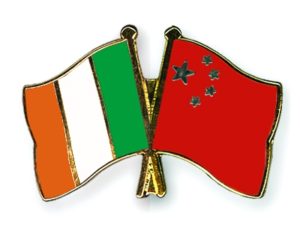 Fan Hong & J.C. Gottwald – The Irish Asia Strategy and Its China Relations 1999-2009 – 爱尔兰的亚洲战略与中爱关系 1999-2009
Fan Hong & J.C. Gottwald – The Irish Asia Strategy and Its China Relations 1999-2009 – 爱尔兰的亚洲战略与中爱关系 1999-2009
